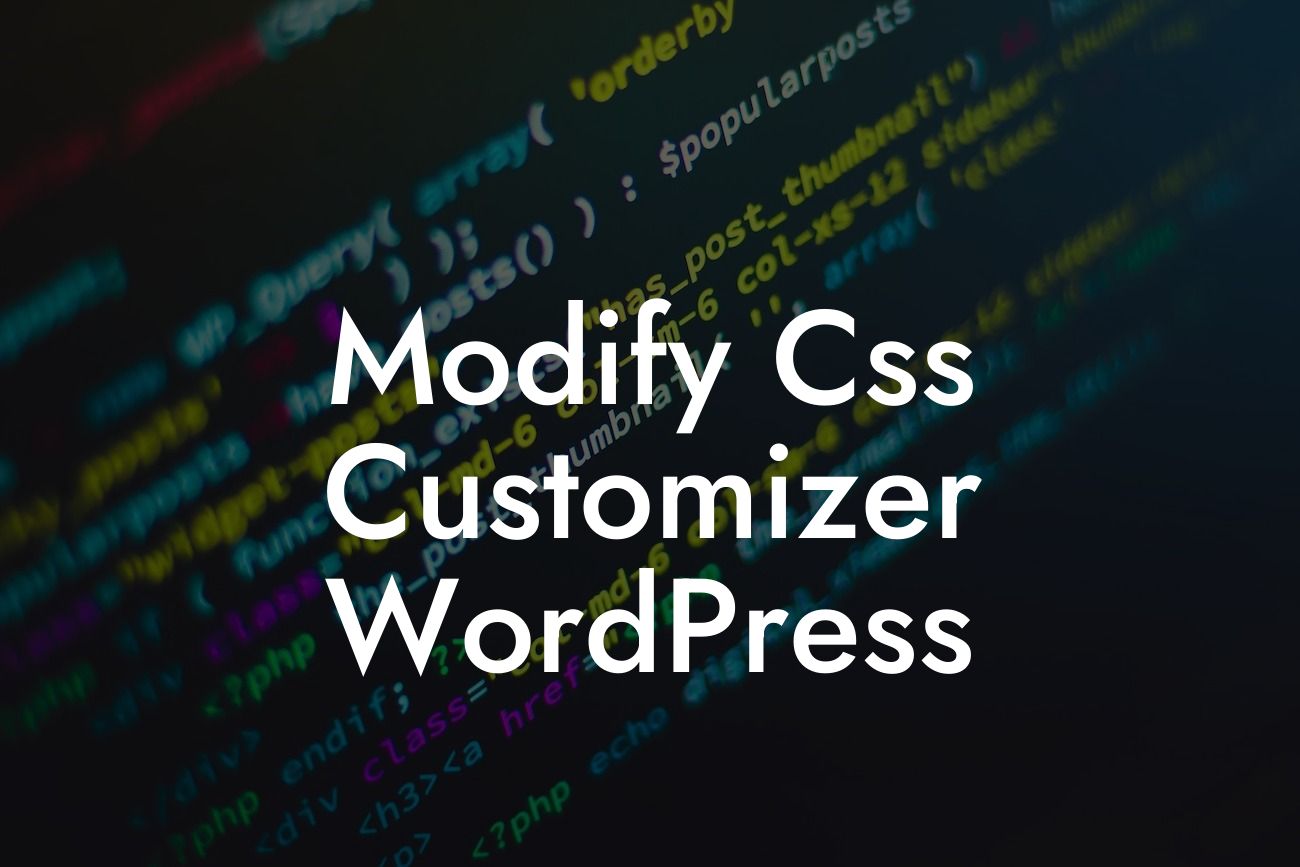Customization plays a crucial role in creating a unique and impactful website. As a small business owner or entrepreneur, you understand the importance of standing out from the crowd and leaving a lasting impression on your audience. In this guide by DamnWoo, we will dive into the world of CSS customizer modifications in WordPress. By the end, you'll be equipped with the knowledge to elevate your website's appearance and boost your online presence.
When it comes to website customization, WordPress offers a wide range of options. However, customizing the CSS (Cascading Style Sheets) directly can provide you with the ultimate level of control over your website's look and feel. Let's explore how you can make the most out of the CSS customizer in WordPress.
1. Understanding the CSS Customizer:
The CSS customizer is a built-in tool in WordPress that allows you to modify the visual elements of your website without altering the core files. It provides a user-friendly interface to tweak various design aspects such as colors, fonts, spacing, and more.
2. Accessing the CSS Customizer:
Looking For a Custom QuickBook Integration?
To access the CSS customizer, navigate to your WordPress dashboard and go to "Appearance" > "Customizer." Look for the "Additional CSS" option, and you're ready to modify the CSS code.
3. Modifying the CSS Code:
Within the CSS customizer, you can add custom CSS code to make specific changes to your website's appearance. This can include altering font styles, changing background colors, adjusting margins, and more. Remember to save your changes to see them reflect on your live website.
4. Utilizing Pre-Made CSS Snippets:
If you're not comfortable writing CSS code from scratch, WordPress offers a vast community of developers who have shared pre-made CSS snippets. These snippets can easily be found with a quick search and can be pasted directly into the CSS customizer to achieve desired design elements.
Modify Css Customizer Wordpress Example:
Let's say you want to modify the font style of your website's headings. Within the CSS customizer, you can add the following code:
h1, h2, h3 {
font-family: 'Open Sans', sans-serif;
font-weight: 600;
}
This code snippet will change the font family to "Open Sans" and set the font weight to bold for all heading tags (h1, h2, h3) on your website.
Congratulations! You've unlocked the power of CSS customizer modifications in WordPress. By utilizing this tool effectively, you can enhance your website's appearance, make it stand out, and captivate your audience. Don't forget to explore other informative guides on DamnWoo and try out our awesome WordPress plugins designed exclusively for small businesses and entrepreneurs.
Remember, the journey to success starts with a unique and remarkable website.
(Promote social sharing icons, explore other guides, and link to DamnWoo's plugins)
Word Count: 700













